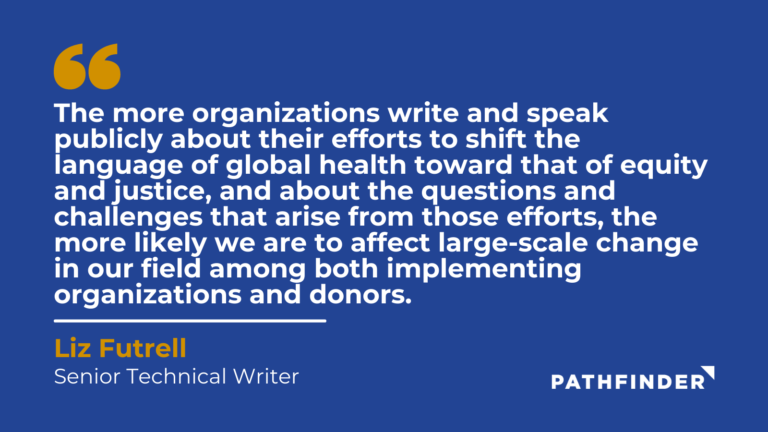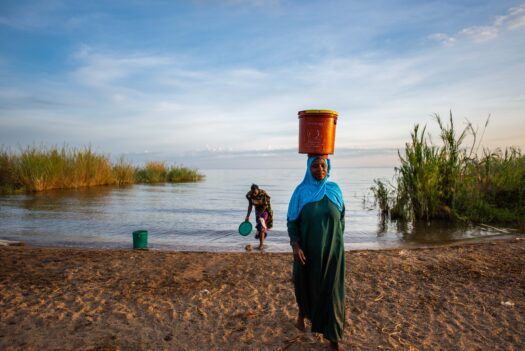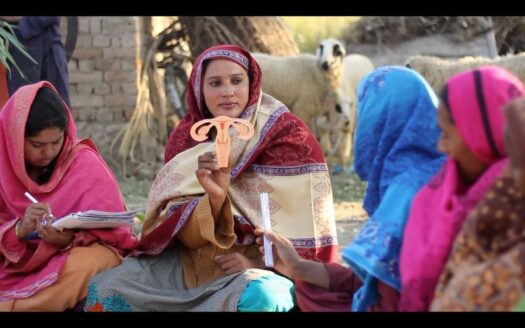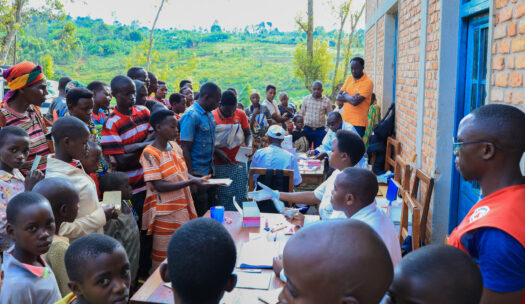Writer Rita Mae Brown once wrote, “Language is the road map of a culture. It tells you where its people come from and where they are going.” But what if you work for a global health organization that operates in not one culture but many distinct, diverse contexts and cultures around the world?
Pathfinder International recently grappled with this question while developing a set of global language guidelines to help ensure that our publications and communications reflect our core values: respect, courage, collaboration, innovation, and integrity. Global language standards play a key role in cultivating a baseline organizational understanding of how we translate our values into words that accurately and appropriately frame and shape our work in any setting.
Pathfinder, like many international NGOs, is moving toward a country-led model that shifts power and resources away from donor countries and into the hands of those closest to the programs we implement, the partners we support, and the people we serve. We want our language—whether we are designing programs or documenting our technical areas of focus, the geographical areas in which we work, or our programmatic approaches— to drive and reflect the equitable power dynamic we are trying to achieve.
This means choosing words that reflect our mutual relationships with community members, colleagues, implementing partners, and governments. It means using inclusive words that are free of bias and that dignify and center people and not their health conditions, behaviors, socioeconomic status, or other circumstances. And it means being specific to avoid harmful generalizations, stereotypes, and othering.
But our standards simply cannot be applied uniformly in every context in which we work. A concept that feels progressive and liberating to readers in a donor country might feel oppressive and paternalistic to an audience in a formerly colonized country with a different set of perspectives, lived experiences, and values. A phrase that makes perfect sense in English might not translate well to French or Portuguese or Amharic or Bangla.

While reproductive justice organizations in the US and some other English-speaking settings increasingly avoid language that reflects a binary understanding of gender, many other languages are themselves gendered. And sexual and reproductive health and rights (SRHR) organizations in many contexts rely on gendered terms to communicate about contraception and other SRHR topics in a manner that is culturally acceptable and resonant to their local audiences. Even within the same culture, not everyone prefers the same terms, and there is rarely a clear “right” or “wrong” answer. Therefore, with our global language guidance as their foundation, our writers and communicators around the world must tailor and adapt their language to effectively reach their specific audiences.
As we’ve rolled out our global language guidance, one of the most frequently raised questions has been, “How do we reconcile donor preferences with our own when the two differ?” For example, our global guidance recommends avoiding the term “beneficiary,” which can patronize people by describing them in terms of the support they receive, imply passive dependency rather than agency, and leave out important context about the disparity or challenge a program is working to address. But many donors have long used that term in their requests for proposals, and it is important to respond in accordance with their conventions. One answer is that, while sometimes there may not be flexibility to change the language, other times, we can seize opportunities to substitute terms that no longer reflect our values with alternatives that do, and, when needed, provide an explanation. Another answer is that, the more organizations write and speak publicly about their efforts to shift the language of global health toward that of equity and justice, and about the questions and challenges that arise from those efforts, the more likely we are to affect large-scale change in our field among both implementing organizations and donors.
Read more about our process for developing the language guidance >>
Download Pathfinder’s language guidance in English, French and Portuguese.


